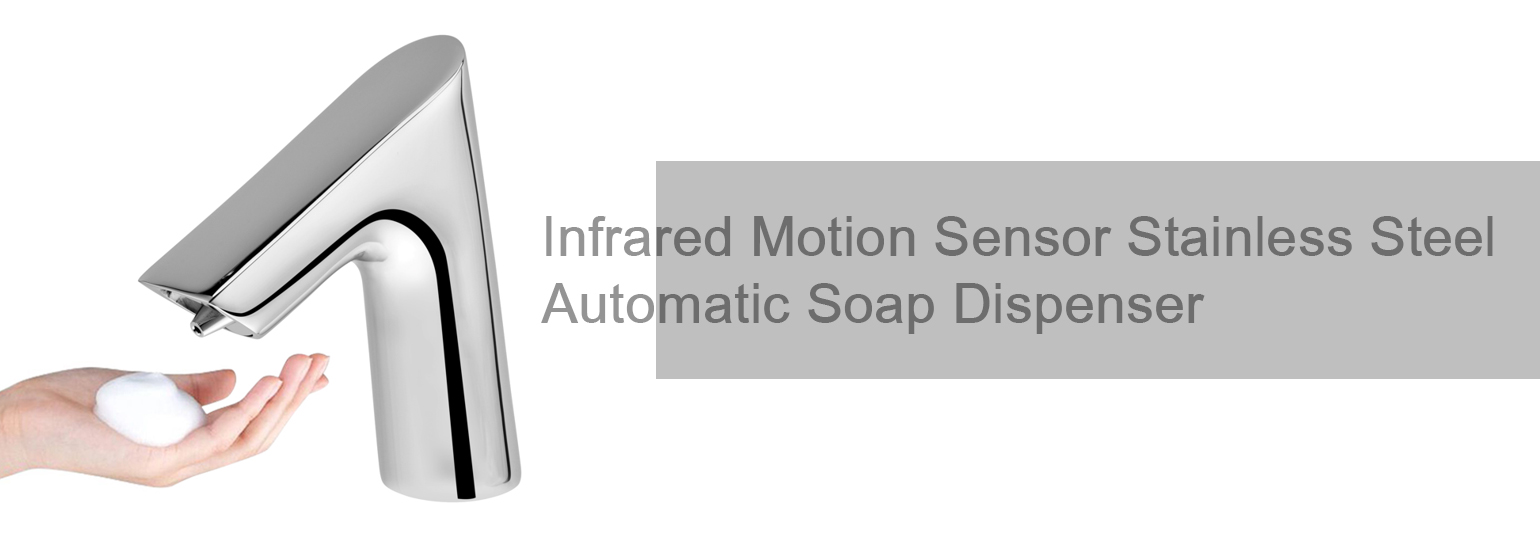
Soap dispensers are common features of all commercial washrooms. These are often non-automatic but there is a recent shift towards use of automatic soap dispensers. Automatic soap dispensers, as their name suggests, automatically dispense soap when hands are brought under the nozzle and are detected by the sensors. These sensors can be of various types. One commonly used sensor is the infrared motion sensor. These sensors are so-called because they can detect infrared radiation. Infrared motion sensor, stainless steel, automatic soap dispensers are frequently used in commercial settings today.
Infrared motion sensor : These soap dispensers use Infrared sensors that can be passive or radar-based. Passive infrared sensors detect infrared radiation emitted by the hands. So, when the presence of hands is detected under the sensor, the pump is activated and soap is dispensed. Radar based infrared motion sensors are also used in some soap dispensers. In this case, there is a source and a sensor of infrared rays. The source emits infrared radiation and the sensor detects its presence when it is reflected off irregular surfaces. When hands are brought under the nozzle, the infrared rays are reflected back and detected by the sensor and then the pump is activated to release soap.
Radar-based sensor: Radar-based automatic soap dispensers can also make use of micro-waves instead of infrared rays. The source emits micro-waves and the sensor detects their presence when these are reflected back from irregular surfaces like the hands.
Photo sensor: Soap dispensers with photo sensors have a source of light and a sensor that can detect this light. The source emits a focused light ray which reflects back from the surface of hands. The reflected ray is detected by the sensor which then activated the pump to dispense soap. The material used in the automatic soap dispensers may also vary between different types. Most common are the stainless steel soap dispensers. Particularly in commercial areas like restaurants where these reduce maintenance cost because they are less likely to rust. Others are made of plastic which is more cost-effective but more likely to get damaged easily.
Benefits of stainless steel automatic soap dispensers
In commercial washroom maintenance of bathroom accessories is problematic. The frequent use exposes them to greater risk of damage. Soap dispensers that are made of stainless steel unlikely to rust or corrode easily unless scratched. Automatic soap dispensers are known for their hygiene-friendliness. Alternatives to these, which include soap bars and other regular dispensers, the purpose of hand-washing is ruined by the contamination risk. Contact is necessary to use these and this means that germs like bacteria can easily be transmitted from one person to another. This is a particular risk in commercial settings like in restaurants where many people will be using the same bar of soap or non-automatic dispenser. Automatic soap dispensers eliminate this risk by eliminating the need to make contact with the soap dispenser.
Another major problem in commercial washrooms is the wastage of soap. Here, usage of liquid soap cannot be monitored so there is a risk of wastage. The automatic soap dispensers reduce this problem by dispensing only as much soap as is necessary for one regular hand wash.
Infrared motion sensor stainless steel automatic soap dispensers have the following feature:
* Nozzle
* Soap container
* Infrared motion sensor
* Activating pump
Stainless steel automatic soap dispensers are ideal for use in commercial settings where there is a high risk of damage, need of repair, wastage of soap and contamination. The features of stainless steel automatic soap dispensers help overcome these problems. These soap dispensers are therefore ideal for washrooms in restaurants, hotels, plazas, gyms etc. As there is no need to touch the device, these automatic soap dispensers are easier to use than the non-automatic soap dispensers. The limited contact with the device also means there will be less damage and thereby less need of repair. Automatic soap dispensers are thus both durable and easy to use.
|